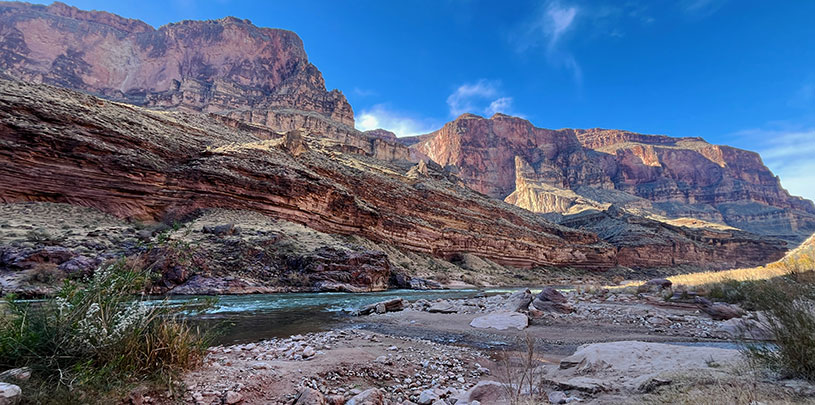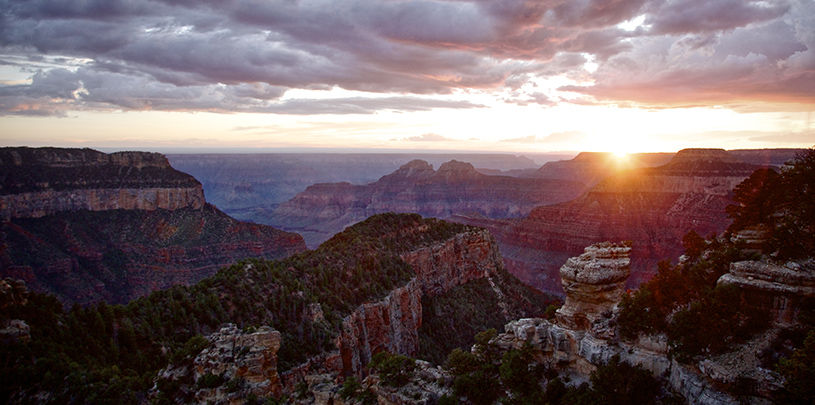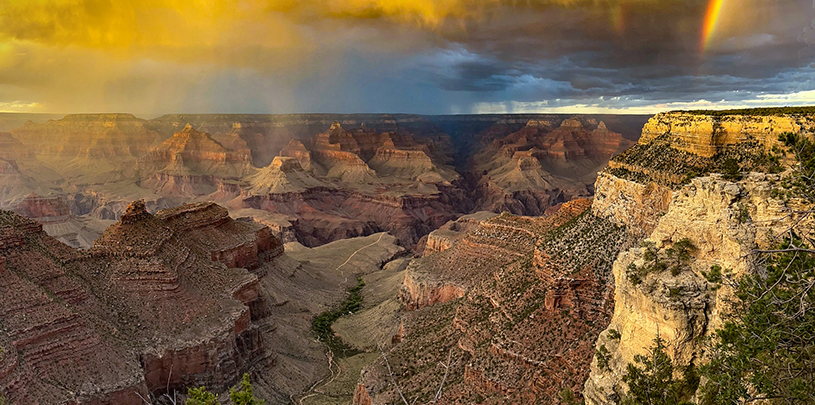
Renae Yellowhorse rose before dawn last week to make the long journey from her home near Tuba City, on the Navajo reservation, to the studios of KNAU radio in Flagstaff, Arizona, where she and nationally acclaimed author Kevin Fedarko confronted Grand Canyon tramway advocate Deswood Tome on Tom Ashbrook’s popular Boston-based National Public Radio show “On Point.”
“The notion that delivering 10,000 people per day to the bottom of the Grand Canyon not having an effect on it is absurd.”
-Kevin Fedarko
A lame-duck president
Tome is an outgoing advisor to lame-duck Navajo Nation president Ben Shelly, who has been the sole official supporter of a contentious plan to build a mega-resort on the canyon’s rim and a gondola ride down to the bottom, where the turquoise waters of the Little Colorado River join the main-stem Colorado in the heart of the Grand Canyon. Shelly failed to qualify for reelection after coming in sixth in the August primary.
Local opposition
For more than two years, Ms. Yellowhorse and members of Save the Confluence, a coalition of local Navajo families, have vocally opposed the plan and the Scottsdale-based developer’s divide-and-conquer tactics to gain approval from local officials.
“What kind of job is he going to offer my three 70 and 80-year-old aunties?” Yellowhorse asked Tome, challenging the developer’s claim that the project will bring jobs to the Navajo Nation. Yellowhorse’s aunts, like many traditional Navajos on the reservation, have raised sheep in the area all their lives and consider themselves gainfully employed.
Tome sidestepped Yellowhorse’s challenge, arguing that the tram to an elevated walkway and a hot-dog stand along the river would have no impact on the Grand Canyon’s natural integrity or nearby areas held holy by Navajo, Hopi, and Zuni religions. Fedarko, whose recent New York Times editorial on the development plan sparked a national outcry, responded, capturing the public outrage: “The notion that delivering 10,000 people per day to the bottom of the Grand Canyon not having an effect on it is absurd.”
Public uproar
Radio listeners from across the country phoned in to echo this sentiment. “It would be a travesty to open that Pandora’s box for profit,” said one caller from Detroit.
“There are some things that are so grand, so special, that they should not be marred by commercial development,” host Tom Ashbrook added.
Renae Yellowhorse, whose opposition to the plan has made her the target of criticism, reiterated the importance of Navajo voices in the debate: “My hope is that it will be stopped—that the world outcry to desecration of such a holy place will be heard….and that… my people, the people that are going to be directly affected, my family, my aunties, that their voices can be heard…and that they won’t fall on deaf ears….”
Listen to the entire On Point broadcast.
You can help. Learn more about Save the Confluence.
Read Kevin Fedarko’s editorial in the New York Times and learn more about Grand Canyon Trust’s work on this issue.




